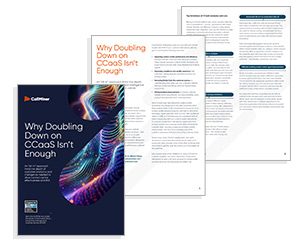Most organizations today understand the importance of improving customer experience (CX), but more are embracing the notion that separate to CX, understanding how your customer feel about your brand as a whole (or brand experience) is equally important.
Brand experience represents the totality of experiences an individual has with your brand, before, during, and after an interaction, making it crucial for brands to cultivate a consistent brand experience across every facet of your business, from your logo to social media profiles, your brand colors to your customer service, and from your tagline to the ease of use of your products.
What Is Brand Experience?
Brand experience represents the overall perception an individual has of your brand based on all the interactions and experiences they have had with your business across channels and at various touchpoints.
It’s influenced by multiple product interactions, social media, customer service, advertisements, and any other exposure to your brand and includes the individual’s emotions, thoughts, and behavioral responses evoked during the engagement.
Brand experience marketing is a type of experiential marketing designed to engage your target audience’s senses and foster positive customer relationships through those collective experiences.
Brand Experience vs. Customer Experience vs. User Experience
Brand experience may seem similar to customer experience and user experience, and in some ways, it is. Both customer experience and user experience have an impact on the overall brand experience, and vice versa. The key difference is in scope:
- Customer experience is the feelings, thoughts, and perceptions customers have of your business after an interaction.
- User experience is the feelings, thoughts, and perceptions a customer has during the process of using your product or service.
- Brand experience, on the other hand, isn’t focused on a particular interaction, channel, product, or service. Instead, it’s the totality of experiences and the relationship a customer develops with your brand as a result of those experiences.
One important distinction between brand and customer experience is that customer experience refers to a customer, while any individual who has had sufficient exposure to your brand develops a brand experience or brand awareness.
Shaping the customer experience heavily impacts the customer’s brand experience, as customers will typically have greater exposure to your brand, products, and services than other individuals.
You should also target the people (your ideal customers) who haven’t yet done business with your company with brand experience marketing.
Why Is Brand Experience Important?
Brand experience is the relationship that you build with your customers over time. The deeper that relationship, the more loyal the customer is likely to be. It can make all the difference when customers are making buying decisions.
One negative interaction can impact the overall brand experience, which is why it’s so imperative to maintain brand consistency across every channel and create a positive experience at every touchpoint.
Brand experience can, however, play a vital role should a customer experience a less-than-ideal interaction with your company.
If the overall brand experience is positive, one negative experience won’t necessarily sever the relationship.
Instead, the many positive interactions your customer has had with your business over time counter those negative thoughts and feelings, and customers are more likely to give you a pass and disregard it as a one-time occurrence.
How to Create a Positive Brand Experience
Gaining a deep understanding of brand experience enables you to carefully mold your target audience’s feelings and reactions to your brand, thus allowing you to influence your audience’s behavior. These best practices will help you cultivate a brand experience that fosters customer loyalty.
Communicate Your Purpose
Your brand’s purpose and brand values are a key component of your brand identity. Aim to instill your brand vales and communicate your purpose in every interaction with your audience.
For instance, if your brand’s purpose is to encourage people to lead a healthier lifestyle, everything from your brand colors to the brand personality you convey on social media should reflect that.
Focus on Evoking an Emotional Response
Experiences that engage customers’ emotions have a lasting impact. The stronger the emotional response associated with an experience, the more memorable it is.
Engaging the senses is a great way to do this when you’re creating real-world experiences. In fact, engaging the senses also creates stronger memories.
Maintain Brand Consistency
Brand consistency is absolutely essential for developing a positive brand experience. From your logo to the tone of your content and the colors featured on your social media profiles, every aspect of your brand identity influences the brand experience.
Take the time to evaluate your visual brand identity materials, the tone and personality of your content, and the way your customer service agents interact with consumers to ensure that your brand identity shines through in every interaction.
Leverage Brand Experience Analytics
Brand experience analytics solutions monitor 100% of customer interactions across every channel, providing valuable insight into brand sentiment and brand perception.
The platform captures both structured and unstructured information from every conversation, whether it takes place over email, phone, SMS, social media, chat, web surveys, and more, including not only the words customers use but also the emotions behind them.
Brand experience analytics solutions go beyond the survey — which provides a snapshot in time —providing visibility into how brand sentiment changes from moment to moment.
Thanks to real-time visibility, you can readily identify drivers of brand sentiment. For example, you’ll have insight into your customers’ behaviors and interactions that occur prior to an increase in brand sentiment to inform your marketing decisions.
Conversely, you can discover what interactions customers have immediately before a drop in brand sentiment and take action to turn those interactions into positive experiences.
Brand experience has a powerful influence on the success of your business. Even if you’re not actively trying to shape your brand experience, the individuals who interact with your brand over time are developing one. Understanding brand experience and following these best practices will help ensure that it’s a positive one.
This blog post has been re-published by kind permission of CallMiner – View the Original Article
For more information about CallMiner - visit the CallMiner Website
Call Centre Helper is not responsible for the content of these guest blog posts. The opinions expressed in this article are those of the author, and do not necessarily reflect those of Call Centre Helper.
Author: CallMiner
Published On: 21st Feb 2023
Read more about - Guest Blogs, CallMiner






 CallMiner is the leading cloud-based customer interaction analytics solution for extracting business intelligence and improving agent performance across all contact channels.
CallMiner is the leading cloud-based customer interaction analytics solution for extracting business intelligence and improving agent performance across all contact channels. 












